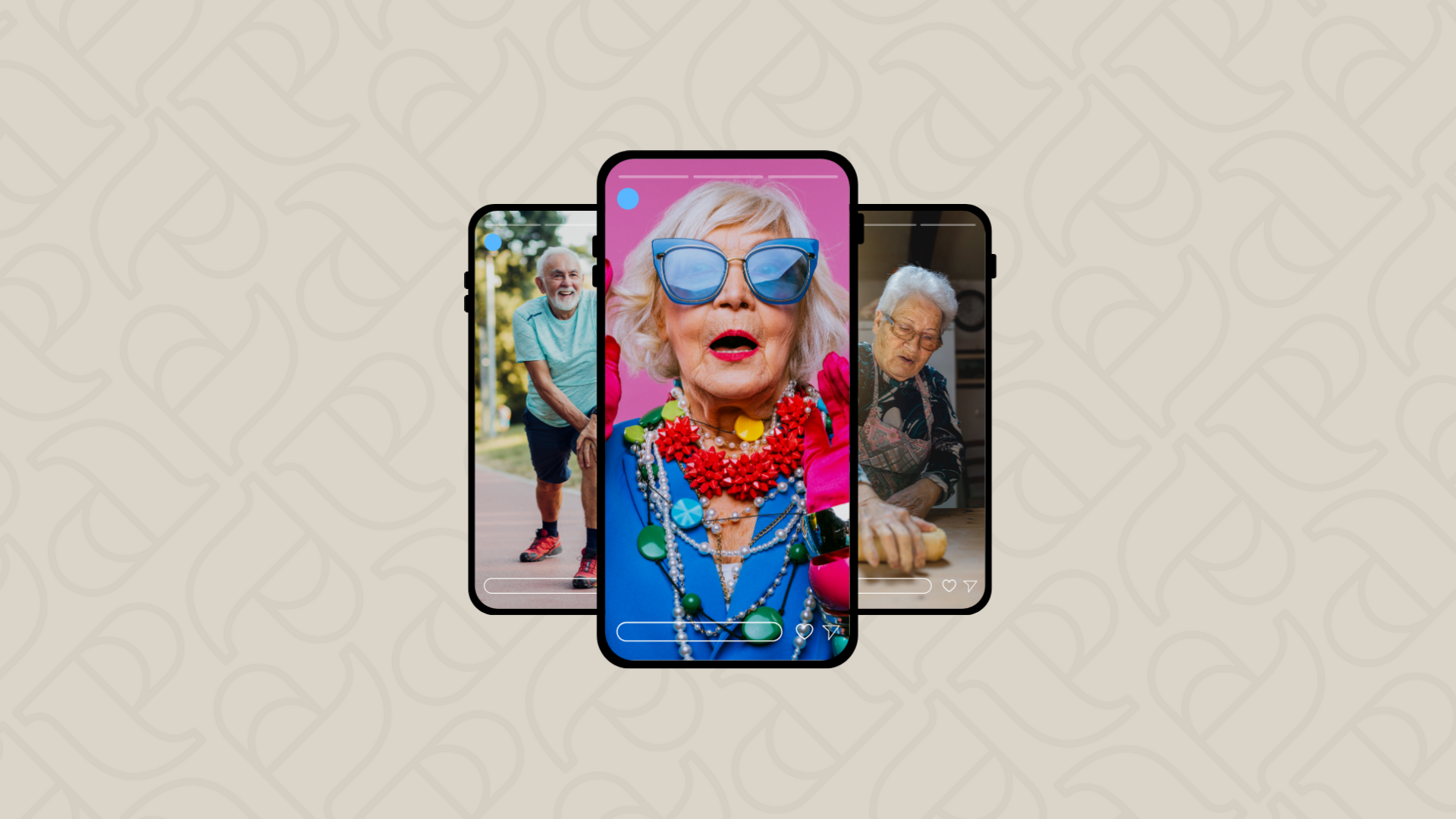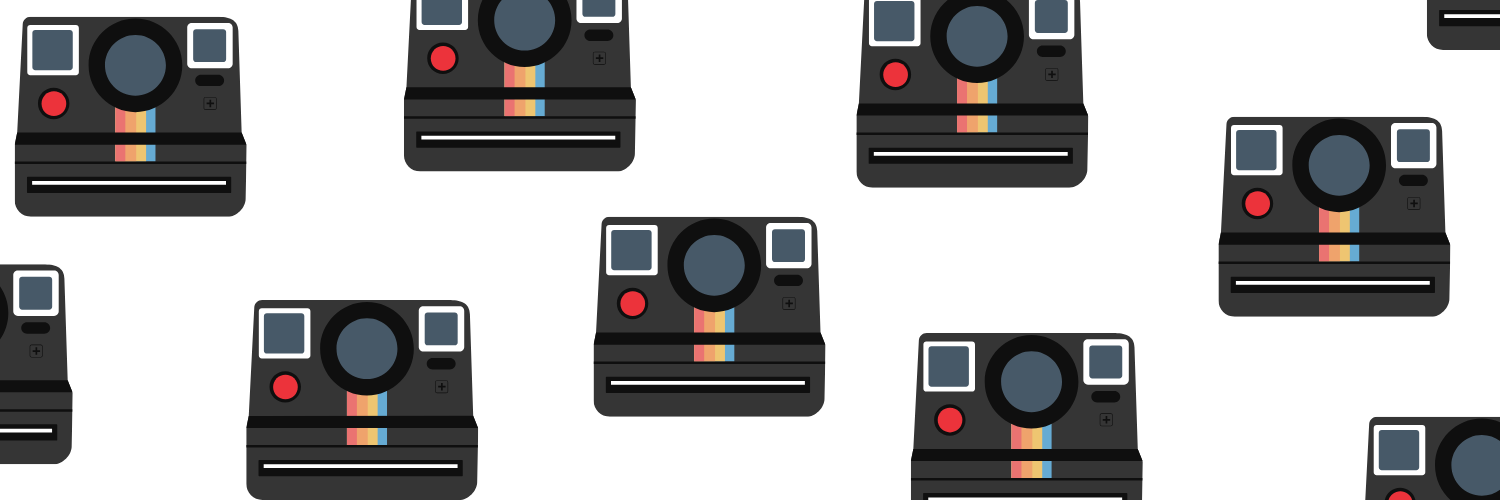Stop Ignoring Seniors: The Marketing World’s Most Overlooked Opportunity

Marketers have spent the past decade chasing Gen Z, studying their slang, platforms, and endless thirst for authenticity. But while everyone’s busy decoding the next youth trend, there’s a quietly powerful audience being ignored: seniors.
By 2030, one in six people globally will be aged 60 or over, according to the United Nations. That’s more than a billion people, not a niche segment but a demographic transformation. Yet most brands are still treating older consumers as an afterthought.
A recent Mintel report (2024) reveals just how deep that disconnect runs. Across Europe, only 3% to 11% of over-55s feel represented by the age ranges they see in brand advertising. In Germany, one of Europe’s largest consumer markets, it’s just 11%. In countries such as Finland and Poland, that number drops to as low as 3–5%.
In short, the people with the highest disposable income, longest brand loyalty, and fastest-growing population share don’t see themselves in your ads.
The Untapped Power of Older Consumers
Here’s the part marketers often overlook: baby boomers are the most affluent generation in history. They own more than half of global wealth and account for nearly 60% of consumer spending in Europe.
They’re digitally connected too. Seniors are now one of the fastest-growing groups on social media. From fitness to fashion, they’re redefining what ageing looks like. Yet, most advertising still clings to youth-led imagery and messaging.
Brands fall over themselves to champion diversity in body size, ethnicity, and gender, but age inclusivity rarely makes the cut. It’s a strange oversight considering this audience spends more, switches brands less, and values quality and trust.
Representation Isn’t Just Nice, It’s Smart Business
Mintel’s research says it clearly: “Despite the increase in the proportion of seniors, most people aged 55+ don’t feel represented by the age ranges they see in brand advertising.”
That’s a huge branding blind spot. When people don’t see themselves reflected in marketing, they assume the product isn’t for them, even when it is.
Brands like LookFantastic are starting to pay attention. Their “26% off for over-60s” initiative is more than a promotion, it’s a signal that older shoppers matter. Others, such as Dove and JD Williams, have tapped older influencers and models to show beauty and confidence at every age, and their engagement rates prove it works.
Imagine if more brands followed suit, creating campaigns that celebrate strength over slenderness, experience over youth, and confidence that comes from living, not filtering.
The Shapewear and Self-Care Connection
The opportunity extends well beyond traditional “senior” categories. Take shapewear, for example, a booming market projected to exceed £3 billion by 2030. Older consumers already buy and wear shapewear, but marketing rarely acknowledges them.
At the same time, Gen Z and millennials are embracing “anti-ageing” and “scar tape” trends, creating a cultural crossover point. Brands could bridge generations by reframing shapewear and self-care as confidence tools for every age, not just the young.
Age is no longer a life stage, it’s a mindset.
Beauty and Skincare: The Age-Inclusive Frontier
The global beauty industry has been built on the myth of eternal youth, yet this same obsession now risks alienating some of its most valuable consumers. In the UK alone, shoppers aged 55+ account for over 40% of total beauty spend, and according to Kantar, women over 55 are the only demographic to have increased their use of beauty products since 2019, but only a handful of brands speak directly to them.
While “anti-ageing” remains a major sales driver, there’s a growing shift towards pro-ageing messaging that celebrates experience, vitality, and care over concealment. Brands like L’Oréal Paris and No7 have started to feature older ambassadors, proving that campaigns celebrating ageing can still drive desirability and sales.
For beauty brands, genuine inclusivity means showing ageing skin not as a flaw to fight, but as something to care for and embrace.
Travel and Leisure: Freedom Reimagined
Few sectors are better positioned to benefit from an ageing population than travel. According to ABTA, over-55s take more holidays per year than any other age group and account for the majority of luxury travel spending. Yet most travel marketing still centres on gap-year adventurers or honeymooners.
There’s space for brands to shift the narrative towards freedom, experience, and connection - values that resonate deeply across generations. Whether it’s adventure travel, wellness retreats, or cultural experiences, older travellers are redefining what “retirement” looks like. They’re active, affluent, and increasingly digital.
A campaign that speaks to “living more, not less” could resonate with this demographic while also inspiring younger consumers to see ageing as something aspirational, not restrictive.
Fitness and Wellness: Strength Over Youth
The fitness industry still markets itself through the lens of youth, six-packs, and 20-something influencers. Yet, the fastest-growing segment in global fitness memberships is people aged 55 and over.
In the UK, one in four gym members is now 55+, and the global wellness market is expected to reach over £6 trillion by 2030. Older consumers are embracing everything from Pilates and strength training to cold-water swimming and yoga retreats. They’re looking for vitality and longevity, not unrealistic ideals.
Brands like Nike and Peloton have made tentative steps towards inclusive representation, but there’s far more room to lead. The real opportunity lies in reframing fitness as empowerment at every age -not a race to stay young, but a lifelong commitment to feeling strong and capable.
Technology and Digital Living: The Silver Tech Boom
Tech brands often forget that older adults are among the most engaged users of digital devices. In the UK, over 80% of people aged 65–74 now own a smartphone, and they’re spending more time online than ever before.
From wearable health tech and smart home systems to digital banking and social platforms, this audience is hungry for innovation, provided it’s designed with clarity and dignity in mind.
The stereotype of the “tech-shy senior” is badly outdated. In fact, baby boomers spend more online than any other generation, and they’re driving demand for accessible design, simplified UX, and trust-based branding.
Brands that communicate tech as a tool for independence, connection, and creativity can win enormous loyalty here. This isn’t about “tech for the elderly”; it’s about technology that empowers everyone, regardless of age.
Fashion and Retail: Style Has No Expiry Date
Fashion has long been one of the worst offenders when it comes to age invisibility. Catwalks, campaigns, and lookbooks are dominated by the under-30s, even though consumers aged 55+ account for nearly half of all fashion spend in the UK.
Older shoppers don’t just want “comfortable” clothes, they want to express identity, personality, and confidence. They buy high-end brands, they follow trends, and they value quality and fit. Yet very few brands speak to them directly.
Labels such as The Row, COS, and Marks & Spencer have found success by subtly designing for style over youth, while independent designers are now beginning to feature models in their 50s, 60s, and beyond. The opportunity is clear: style doesn’t stop at a certain age, and brands that reflect that truth will feel more modern, not less.
Finance and Insurance: The Trust and Empowerment Economy
The finance industry is built on trust - and that’s precisely where older consumers excel. They have experience, savings, and long-term planning on their minds. Yet financial brands often overlook them in favour of chasing fintech-savvy millennials.
It’s a costly mistake. Consumers aged 55+ hold over two-thirds of the UK’s personal wealth, and they’re increasingly open to digital banking, ethical investing, and lifestyle-driven financial products. The rise of “silver fintech”, from simplified investment apps to pension planning platforms, shows how technology and finance can merge to empower this group.
Insurance is another area ripe for reinvention. Instead of fear-based marketing, there’s an opportunity for messaging built around confidence, security, and independence, values that resonate across all ages but particularly with those planning their next chapter.
Food and Beverage: The Appetite for Wellness and Experience
The food and drink industry often fixates on youth culture - plant-based lifestyles, protein snacks, or TikTok recipes, yet it’s older consumers who drive premium food spending. According to Kantar, shoppers aged 55+ account for more than 45% of grocery value sales in the UK.
This audience is highly health-conscious but also driven by pleasure and experience. They’re willing to pay for provenance, ethical sourcing, and quality. There’s a huge opening here for brands to talk about longevity, flavour, and joy, not restriction or dieting.
We’re already seeing success stories, from Waitrose’s focus on quality living to wellness brands offering supplements and functional foods designed around vitality rather than youth. The opportunity lies in telling richer stories, about shared meals, cooking confidence, and enjoying food at every age.
Automotive and Mobility: Freedom Reinvented
Mobility represents independence, and that’s something people value even more with age. Yet car marketing is almost entirely youth-driven, filled with fast cars, city lights, and 30-year-old models.
In reality, drivers over 55 make up the largest share of new car buyers in the UK, and they’re leading the shift towards electric vehicles, safety tech, and comfort-first design. They’re not just practical buyers - they see driving as a symbol of autonomy.
There’s also a growing demand for mobility beyond cars: e-bikes, car-sharing schemes, and inclusive transport tech. Brands that communicate freedom, sustainability, and design for all life stages, rather than just the “young adventurer” stereotype - can unlock a loyal, high-spending audience.
Children’s Products and Toys: The Gift-Givers Driving the Holiday Economy
Every year, brands pour billions into targeting parents in the run-up to Christmas, yet one of the biggest spenders in the children’s market is quietly overlooked: grandparents.
According to research by Mintel and Age UK, over 60% of grandparents buy gifts for their grandchildren every month, and during the festive season they account for nearly one in three pounds spent on children’s products. This audience isn’t just generous - they’re deeply emotionally invested. Gift-giving is how many stay connected, express love, and play an active role in family life.
Yet, marketing around toys, games, and kids’ fashion is almost entirely directed at young parents. The tone, visuals, and even payment plans (think “buy now, pay later”) are rarely tailored to older shoppers.
There’s a huge opportunity here for brands to rethink seasonal storytelling and target seniors as primary purchasers, not secondary ones. From toy brands to children’s clothing, campaigns could focus on nostalgia, connection, and shared experiences, rather than just unboxing moments.
Think of a Christmas advert that doesn’t just show the joy of receiving but the joy of giving, a message that resonates across generations.
By including older consumers in creative strategy and influencer partnerships, brands could unlock not just seasonal sales but lasting emotional loyalty.
How Brands Can Lead the Age-Inclusive Revolution
If you’re wondering where to start, here are a few approaches that work:
- Feature older influencers and creators in campaigns, not as tokens but as aspirational, relatable figures.
- Rethink “anti-ageing” language, focusing on vitality, style, and experience rather than youth obsession.
- Design loyalty or discount schemes for 55+ consumers, as LookFantastic’s 26% discount demonstrates.
- Expand your definition of inclusivity to include age as a core part of your brand’s diversity and equity strategy.
This isn’t about ticking a demographic box, it’s about evolving with reality. The global population is ageing fast, and the brands that embrace that truth will win both loyalty and longevity.
Final Thought
Marketing has long been obsessed with what’s new, young, and next. But perhaps the next big thing isn’t new at all, it’s older.
The future of marketing belongs to the brands that stop chasing youth and start embracing humanity across all ages. The question isn’t whether to speak to seniors, it’s whether you can afford not to.
At Pepper, we specialise in identifying and collaborating with the right influencers to meet your brand’s unique needs - from emerging voices to established names who bring authenticity and reach across every generation.
If you’re ready to make your brand truly age-inclusive and future-fit, get in touch.
Explore Our Latest Insights
Stay updated with our latest articles and resources.





Ready to elevate your marketing strategy?
Let’s add some spice to your next campaign 🌶️






